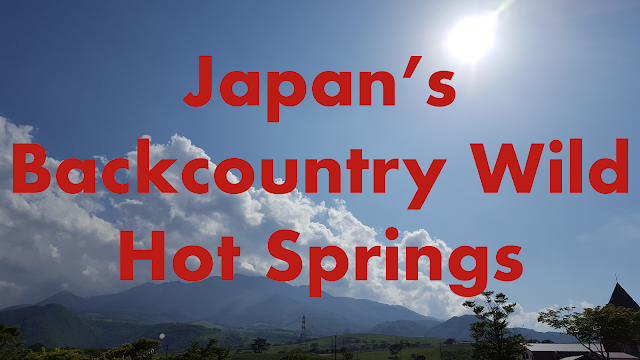The Secret Heart of Nikko National Park: Japan's Highest Marshlands
Nikko National Park is a vast expanse of mountains, forests, hot springs, waterfalls and ancient temples. Located to the north of Tokyo, it is a popular day destination. People love to see the UNESCO World Heritage Site and ancient shrine, Nikkō Tōshō-gū. The quiet forest behind the shrine is where the famous shogun Tokugawa Ieyasu rests. People come from all over the world to see the massive Kegon Falls, and Lake Chuzenji that feeds it. There are enough secluded hot spring inns scattered among the forests and mountains that you never need to visit the same one twice. This is just one side of Nikko.
 | |||||||||||
My wife and I left Tokyo early in the morning. What was dingy, wet weather in the city would be a near blizzard in the mountains. As we creeped through the countryside to the outskirts of Nikko, the site of bushes and ground gave way to a clear white wonderland. The biggest drawback to driving anywhere in Japan is the tolls. When you drive to popular tourist spots, every other tunnel and road will nickel and dime you. We hit maybe three unexpected, cash only 'tunnel tolls'. If you ever drive down to Atami or Izu, you will know what I mean.
We broke off from the main road around Kawaji Onsen. A steep switchback of roads went right up the mountain. The two lane road gave way to one lane. Dipping in and out of the small river and lakeside villages forces you to confront the real issue of depopulation. Even in a popular tourist area like this, the towns have growing blight. Depopulation appears to be a pressing issue. The long harsh winter has not been kind here.
 |
| Kinugawa River |
Our plan was to take a leisurely snow trek along the Kinugawa river to our accommodation for the night. The famed inn, Hatcho-no-yu, was an old hot spring inn and one of the few allowed to operate so deep in the park. It boasts a large waterfall and a number of hot spring pools adjacent to it. Surrounded by wilderness, it is the perfect retreat to escape the grey concrete stress of the city.
The morning snowstorm had blanketed the entire valley in deep white snow. It was up to us to break the trail. We followed directly along the river admiring the many frozen wonders that winter provides. We were informed later that this might be the last real winter storm for the season, so we were quite lucky to see the soft, cool beauty before us.
 |
| the inn |
Early the next day, the real hike began. I set off alone in full winter kit to visit the Kinu-numa Marsh. At 2000 meters, Kinu-numa marsh is the nations highest wetlands. Here, the source waters for the Kinugawa river begin. In summer, the marsh is host to a wonderful variety of alpine plants. In winter, it is a harsh wasteland.
 |
| waterfalls across the valley |
In summer, there is a mellow set of switchbacks going up the cliff face. In winter it is a lot steeper and icier with the switchbacks buried. Slowly I made my way up the lip of the cliff onto the forest plateau. This was all virgin snow. An empty, icy wonderland that appeared untouched. Even old tracks hadn't made it here. Looking back from the edge is an incredible sight of deep mountain waterfalls, eclipsed by the icy peak of Mt. Nikko-Shirane.
After trudging through the forest, it gave way to the marsh. It was...barren. The wind blew across fiercely and without barriers. The few trees inside the marsh were almost completely buried in the snow, only showing their very tops. It was emptiness accompanied by the hiss of the wind. That was just how I liked it.
 |
| Kinu-numa Marsh |
 |
| last minute hot spring |
Finally, we took the easy way out and hopped on the inn's shuttle back to our car. On the ride back, I had a chance to chat with the old man driving the shuttle. He was a local and knew the area quite well. He had the courtesy to share with me one of Nikko's most underappreciated secrets. One I hope to share in part two, sometime down the road.




Comments
Post a Comment